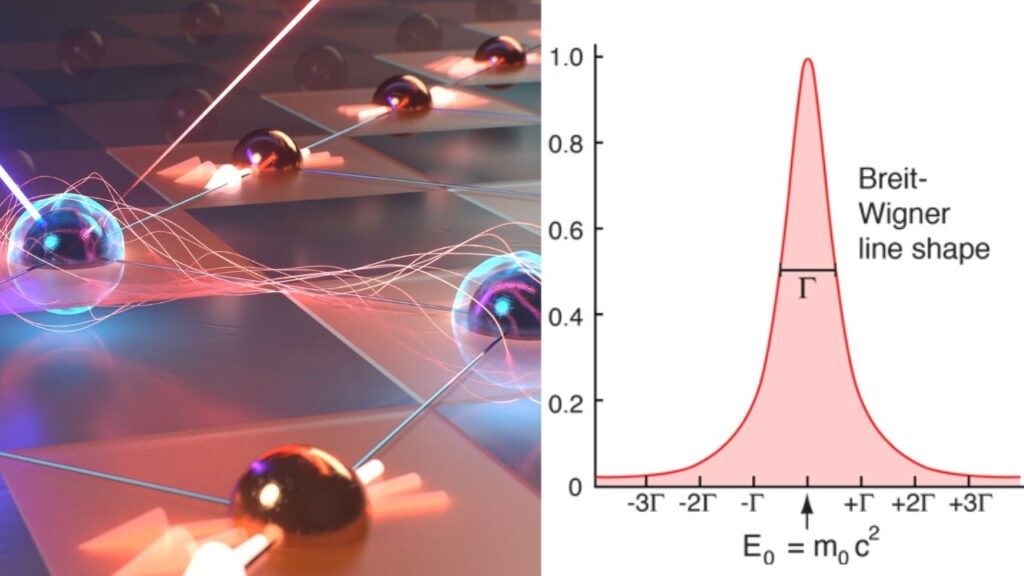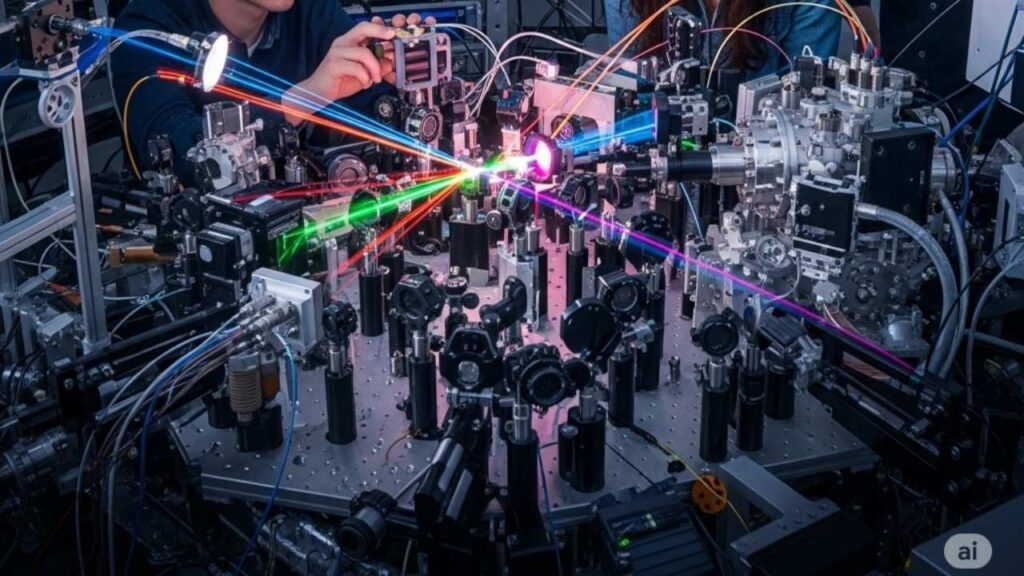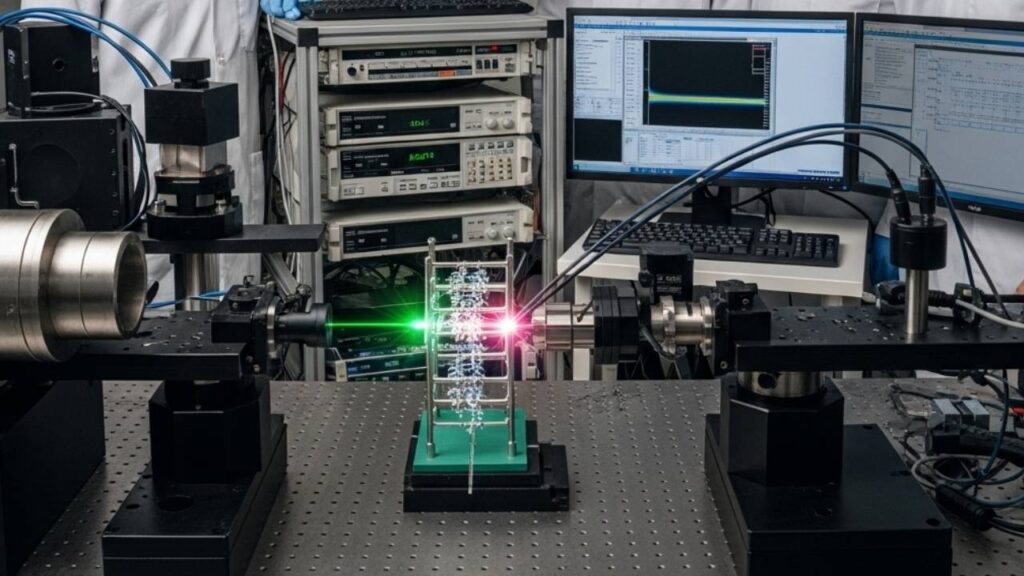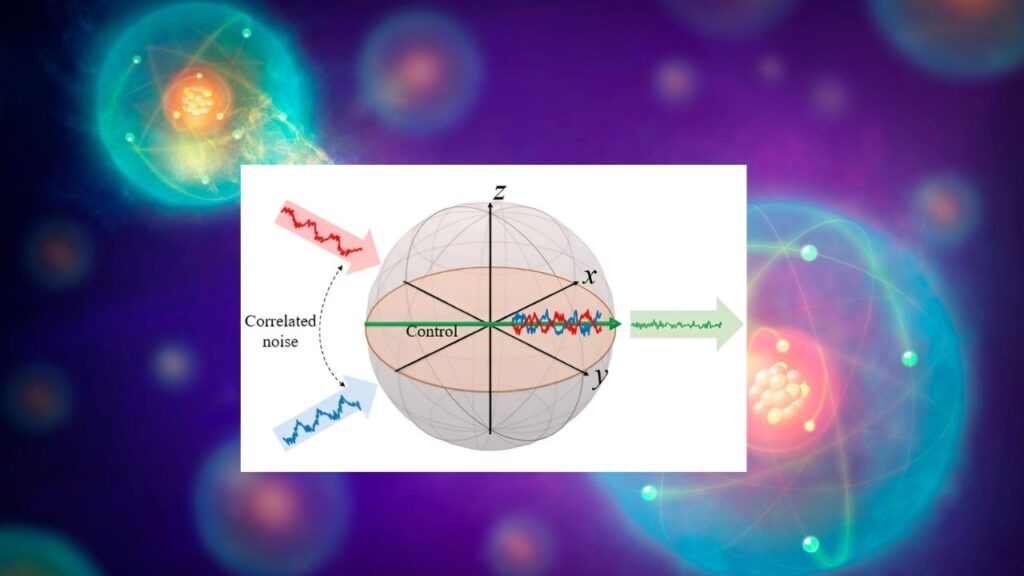Scientists Extend Quantum State Lifetimes Using Laser Pulses: Quantum technology is one of the most exciting frontiers in science and engineering today. However, a major challenge has long limited progress: quantum states, the delicate conditions that enable quantum phenomena, typically last for extremely short durations—often mere trillionths of a second. Recently, a team of scientists achieved a groundbreaking breakthrough by using ultrafast laser pulses to extend quantum state lifetimes nearly 1,000 times, moving lifetimes from the picosecond scale (10⁻¹² seconds) to the nanosecond scale (10⁻⁹ seconds). This advance could accelerate the development of quantum computing, sensing technologies, and energy-efficient devices.

This article delves deeply into the science behind this achievement, breaking down the complex concepts into clear, understandable language. We’ll explore the significance of extended quantum state lifetimes, the experimental methods used, and the potential impact on quantum technology.
Scientists Extend Quantum State Lifetimes Using Laser Pulses
| Aspect | Details |
|---|---|
| Institutions Involved | Harvard University, Paul Scherrer Institute (PSI) |
| Material Studied | Cuprate Ladder Compound (Sr₁₄Cu₂₄O₄₁) |
| Technique | Ultrafast laser pulses break electronic symmetry, trapping metastable quantum states |
| Lifetime Extension | From ~1 picosecond to ~1 nanosecond, nearly 1,000x increase |
| Measurement Tools | Time-resolved resonant inelastic X-ray scattering (tr-RIXS) |
| Applications | Quantum computing, quantum sensing, energy-efficient electronics |
| Significance | Enabling longer quantum coherence times essential for scalable quantum devices |
Extending the lifetime of quantum states using ultrafast laser pulses represents a transformative advancement in quantum technology. By manipulating the electronic symmetry in complex cuprate ladder materials, scientists have shown it’s possible to trap quantum states for nearly 1,000 times longer than before.
This leap forward provides a new tool for enhancing quantum coherence, essential for quantum computing, sensing, and energy-efficient technologies. As research progresses, these findings could accelerate the development of practical quantum devices, bringing the promise of quantum technology closer to reality.
Understanding Quantum States and Their Lifetimes
To grasp why extending quantum state lifetimes is so critical, we first need to understand what quantum states are.
A quantum state defines the condition of a particle or system in quantum mechanics. It contains information about properties such as an electron’s energy level, spin, or position. Quantum states are the foundation for phenomena like superposition (particles existing in multiple states simultaneously) and entanglement (strong correlations between particles regardless of distance).
The challenge is that these states are inherently fragile. They interact with their surroundings and lose their quantum properties rapidly—a process known as decoherence. This limits how long quantum information can be stored or manipulated, posing a major obstacle for technologies like quantum computers.
Typically, quantum states in solid materials persist only for picoseconds (trillionths of a second), which is far too short for practical applications that require stability over nanoseconds or longer.
The Breakthrough: Using Ultrafast Laser Pulses to Extend Quantum State Lifetimes

Researchers from Harvard University and the Paul Scherrer Institute used a novel approach to overcome this challenge.
The Material: Cuprate Ladder Compound
They studied a complex copper-oxide material called Sr₁₄Cu₂₄O₄₁, known as a cuprate ladder compound. This material contains two distinct arrangements of copper and oxygen atoms:
- Ladder structures: Rows of copper atoms linked like rungs on a ladder.
- Chain structures: One-dimensional chains of copper atoms.
The interplay between these structures affects the material’s electronic and magnetic properties, making it a rich platform for quantum research.
The Technique: Symmetry Breaking via Laser Pulses

Using ultrafast laser pulses lasting only femtoseconds (quadrillionths of a second), the scientists were able to break the electronic symmetry between the ladder and chain parts of the compound. This temporary symmetry breaking enabled electrons to tunnel from the chains to the ladders.
When the laser pulse ends, the tunneling “valve” closes, and the system becomes trapped in a metastable quantum state — a state that persists much longer than usual because the electrons are confined in a new configuration.
Measuring the Effect: Time-Resolved Resonant Inelastic X-ray Scattering (tr-RIXS)
To observe these changes, researchers used tr-RIXS, a cutting-edge technique that provides detailed information on the quantum states of electrons in materials over time.
Through tr-RIXS, they found that the lifetime of the excited quantum state extended from around one picosecond to nearly one nanosecond — an increase of almost 1,000 times.
Why Does This Matter for Quantum Technology?
1. Enhanced Quantum Coherence

Longer-lived quantum states mean better quantum coherence. Coherence is essential for the proper functioning of quantum computers, which rely on qubits maintaining their quantum properties long enough to perform calculations.
2. Reliable Quantum Sensors
Quantum sensors exploit fragile quantum states to detect extremely subtle changes in physical quantities, such as magnetic or electric fields, temperature, or gravitational forces. Extending quantum state lifetimes increases sensor accuracy and stability.
3. Energy-Efficient Electronics
Quantum materials with stable electronic states could lead to devices that operate with minimal energy loss, important for reducing power consumption in future electronics.
Step-by-Step Breakdown of the Experiment
Step 1: Preparing the Material
A high-quality sample of Sr₁₄Cu₂₄O₄₁ was prepared and cooled to low temperatures to minimize thermal disturbances.
Step 2: Applying Ultrafast Laser Pulses
The researchers applied carefully tuned femtosecond laser pulses to the sample. The pulses were designed to temporarily break the symmetry between the ladder and chain structures.
Step 3: Electron Tunneling
During the pulse, electrons tunneled from the chains into the ladders, creating a non-equilibrium electronic state.
Step 4: Trapping the Metastable State
When the laser pulse ended, the electron tunneling stopped abruptly, trapping the system in a metastable quantum state.
Step 5: Measurement and Analysis
Using tr-RIXS, the team monitored the decay of the excited states, confirming the lifetime extension to the nanosecond scale.
How This Discovery Fits Into the Larger Quantum Research Landscape
This achievement complements other major advances in quantum technology:
- Some teams focus on creating complex entangled states using atoms or photons, important for quantum communication.
- Others work on error correction and quantum memory to improve quantum computers’ robustness.
- The present research provides a new avenue for stabilizing quantum states in solid materials, vital for integrating quantum technology into practical devices.
Practical Implications for Researchers and Industry Professionals
For those developing quantum technologies, these insights suggest important strategies:
- Utilize electronic symmetry control to manipulate quantum states without altering material structure physically.
- Incorporate ultrafast laser techniques to create and sustain metastable states that extend coherence times.
- Explore complex oxide materials, such as cuprate ladders, for new quantum device platforms.
- Develop measurement techniques like tr-RIXS for detailed monitoring of quantum states.
New Geopolymer Tech Transforms Glass and Waste Into Ultra-Durable Green Building Material
AI-Driven Models Accelerate Molecular and Materials Discovery in Biomedical Research
Superconducting Diode Bridge Efficiently Converts AC to DC for Quantum Circuits
FAQs About Scientists Extend Quantum State Lifetimes Using Laser Pulses
Q1: What is a metastable quantum state?
A metastable quantum state is an excited state that persists longer than typical excited states but is not permanently stable.
Q2: Why is electron tunneling important in this context?
Electron tunneling allows electrons to move between parts of the material, enabling new quantum states that can be trapped and stabilized.
Q3: How does symmetry breaking affect quantum states?
Breaking symmetry changes the balance of electronic interactions, enabling the creation of new quantum configurations that can have longer lifetimes.
Q4: Can this technique be applied to other materials?
Potentially yes, though it requires materials with suitable electronic structures where symmetry breaking and tunneling can be controlled.
Q5: What challenges remain before this can be used in quantum computers?
Scaling the technique, integrating it with existing quantum architectures, and ensuring stability under practical operating conditions remain key challenges.






